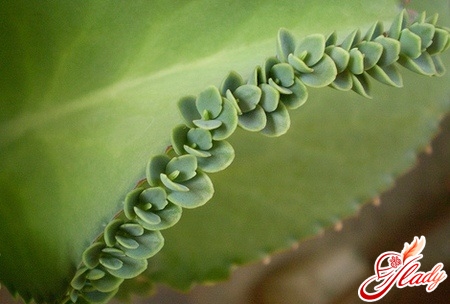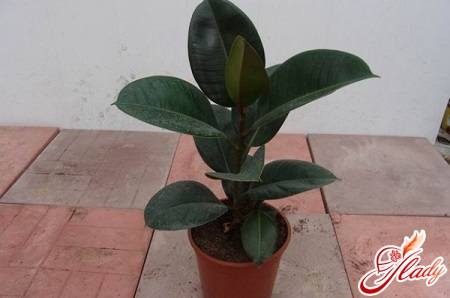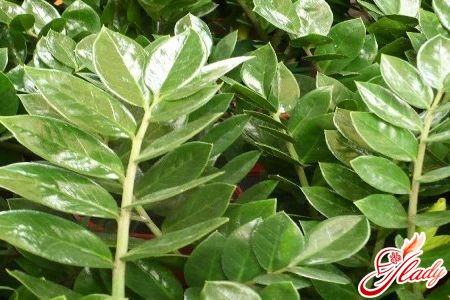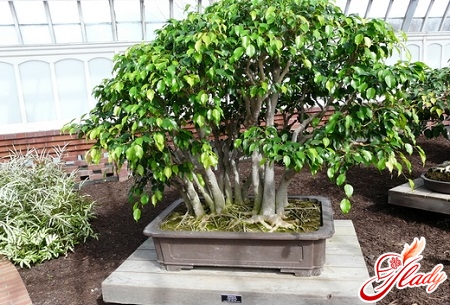
Many of us, when we mention ficuses,remember the rubber plant that decorated our homes back in Soviet times. But recently, the Benjamin ficus has become extremely popular - a large and spreading bush that is not the most demanding in care. Naturally, fans of this species have a question: how to propagate a ficus? We decided to tell you about all the possible options, and you choose the one that suits your situation. It is important that before propagating the Benjamin ficus, the mother plant is absolutely healthy. The best time to get new individuals is considered to be spring and early summer - then the young shoots will have time to take root well and get stronger by the beginning of the cold season. Benjamin ficus is propagated in the following ways:
- cuttings;
- cloning;
- seeds.
Vegetative reproduction of ficus
Propagation by cuttings can be applied tothe vast majority of ficuses, and not just this variety. First of all, cuttings are prepared. To do this, use a sharp knife to cut off the apical, already semi-woody branches up to 15 cm long. Cuttings cannot be prepared with scissors or blunt objects - they will crush the tissue of the shoots and significantly slow down rooting. Large leaves are removed from the cuttings to prevent excessive evaporation of moisture, and on average, three leaves are left per cutting. The milky juice that is released at the cut quickly hardens and does not allow the root system to develop. Therefore, it must be disposed of immediately after the cuttings are prepared: you can either wash off the juice under running water until it stops coming out, or put the cutting in a jar of clean water and change it every two hours. After the juice stops flowing, the cut should be dried in the open air for a couple of hours. Ficus takes root quite quickly in warm water. To prevent rotting, add a tablet of activated carbon to the water and make sure that the lower leaves do not touch the water. The container where the cuttings are for rooting should be in a sufficiently lit area, but not in direct sunlight. Add water as it evaporates. The cutting needs high humidity and warmth, and such conditions are much easier to create in a mini-greenhouse. In about a couple of weeks, light growths may appear, the so-called callus tissue, from which roots will later form. As soon as roots appear on the cutting, it can be planted in a regular substrate.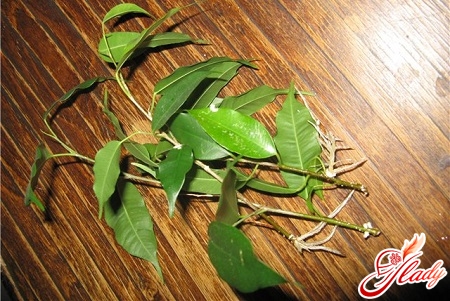
Method of reproduction of Benjamin ficus with cuttings in the substrate
In addition to the standard method of rooting cuttingsin water, propagation by cuttings can be carried out immediately in the substrate: wet sand, peat, perlite or vermiculite. Cuttings are prepared in the same way as in the previous method, and it is necessary to wash out the milky juice. After the cut has been dried, it is covered with crushed coal and immersed in the soil by one bud. To create the necessary conditions, the young ficus Benjamin is covered with a jar from above or placed in a mini-greenhouse with polyethylene. The soil should always be moist, but not soggy. Periodically, the cuttings need to be ventilated - this will help to avoid rotting. It is better for the soil to be warm, and for heating you can use a heating pad or a warm battery. You can understand that the ficus has taken root by the appearance of new leaves. But you can not open the greenhouse right away, this is done gradually, accustoming the young plant to new conditions of maintenance.
Mass reproduction of figs
In order to get a young ficusBenjamin, you only need a small piece of stem with one leaf on it from the middle or upper part of the trunk. In principle, from one shoot you can get as many ready-made cuttings as there are leaves on it. The upper cut should be made immediately above the axillary bud, the lower cut - at an angle, then take most of the internode. Most of the leaf cutting is buried in the ground; make sure that the leaf petiole remains on the surface. The leaf itself must be rolled into a tube and fixed with a rubber band. You can install a peg through the resulting tube - this way the cutting will be more stable. The required number of cuttings are planted in a greenhouse and covered with polyethylene. It is necessary to warm the soil and regularly ventilate the cuttings. In about a month, they will take root and release new leaves. To root faster, it is recommended to make a couple of cuts on the lower cut of the ficus (depending on the thickness of the trunk, there may be more cuts). You can make longitudinal scratches a few centimeters from the lower cut. The larger the wound surface, the more actively the callus tissue is formed and, accordingly, the faster new roots will appear. Whatever you choose: rooting in water or in soil, it is advisable to treat the lower part of the cutting with a special root stimulator. Alternatively, you can pre-soak the cutting in a stimulator solution or add a few drops of root to the water where the cutting will be. Beginners are recommended to propagate Ficus Benjamin by cuttings in water. This makes it much easier to monitor the shoot and can prevent rotting from below. Small cuttings are conveniently rooted in special pots for seedlings with a removable bottom. In the future, it will be very easy to transfer young plants to pots with a larger diameter.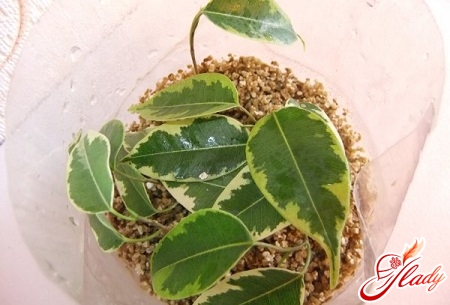
Seed multiplication of ficus
This is how to grow ficus at homeBenjamin is difficult to propagate, if not impossible. But if you have seeds, they must first be treated with growth stimulants and fungicides, then sown superficially on a moist and light substrate. Cover the container with seeds with film and place in a mini-greenhouse. For seed germination, it is necessary to constantly maintain the temperature within 25-30 degrees. After germination, the sprouts must be provided with bright light, otherwise the sprouts will stretch out a lot.
Cloning of Ficuses
An industrial procedure in whichthe reproduction of ficus benjamina occurs. This method is based on the totipotent properties of plant cells. Simply put, on its ability to generate exactly the same plant under certain conditions and with adequate nutrition. Each cell stores complete information about the mother plant and is able to recreate its exact copy. Plants obtained in this way are absolutely identical, but already free from various infections, if the mother plant had any. Ficus benjamina obtained in this way is slightly more compact in size and branches well.




